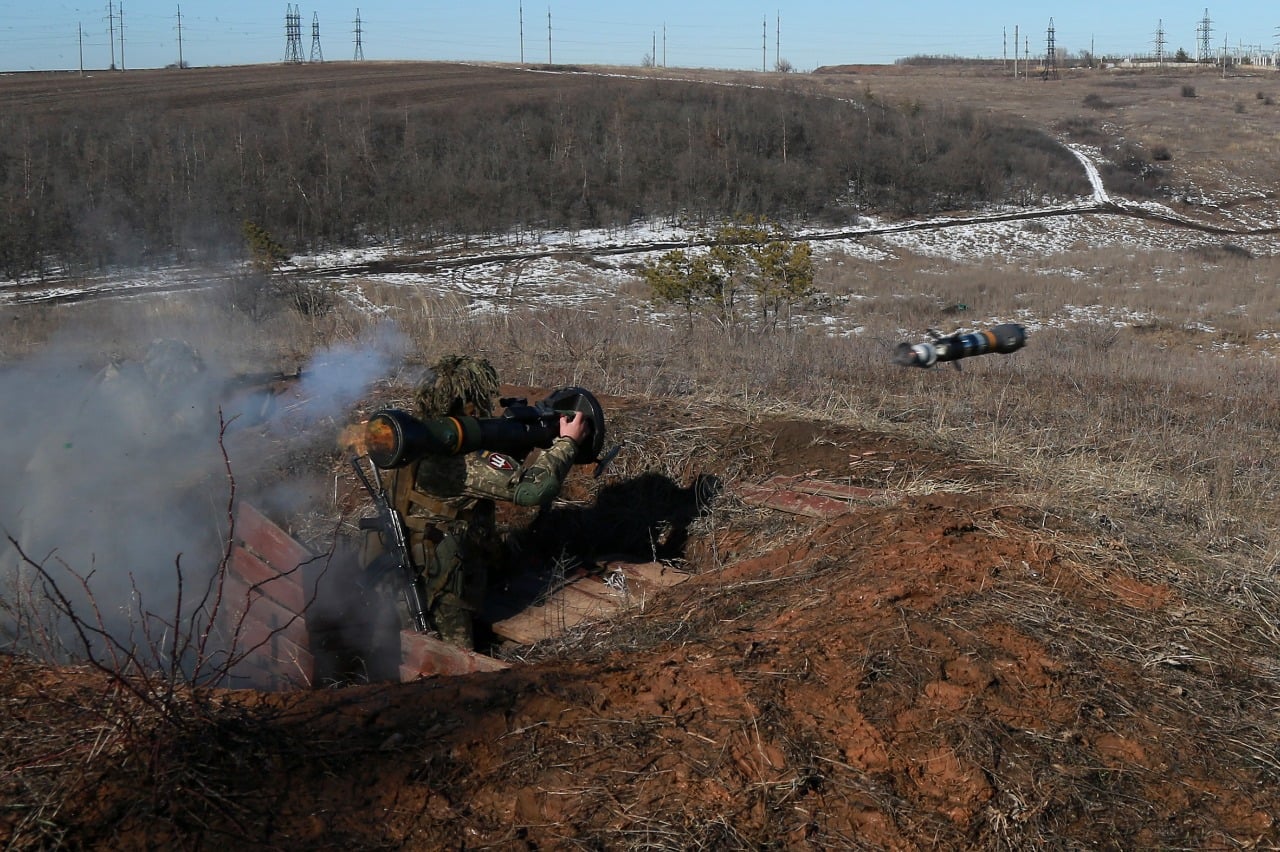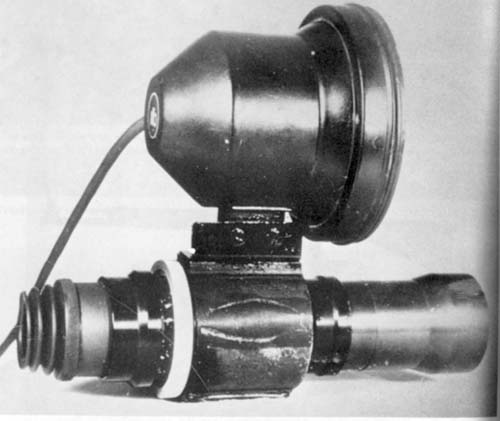|
MPATGM
The MPATGM or man portable anti-tank guided missile, is an Indian third generation fire-and-forget anti-tank guided missile (ATGM) derived from India's Nag ATGM. It is being developed by the Defence Research and Development Organization (DRDO). Design The MPATGM is a low weight, long cylindrical missile with two groups of four radial fins, larger ones at the middle, and smaller ones at the tail. It is fitted with one high-explosive anti-tank (HEAT) shaped charge warhead. The missile has a length of about 130 cm and a diameter of about 12 cm with a collapsible tripod, and launch tube of aluminum and carbon fiber to reduce weight. It has a weight of 14.5 kg, with its command launch unit (CLU) weighing 14.25 kg which combines a laser designator with digital all-weather sight. Minimum range is 200 to 300 m; maximum range is 4 km. The MPATGM is equipped with an advanced dual-mode imaging infrared homing (IIR) sensor with integrated avionics for day and night ope ... [...More Info...] [...Related Items...] OR: [Wikipedia] [Google] [Baidu] |
Nag (missile)
The Nag missile (), also called Prospina for the land-attack version, is an Indian third-generation, all-weather, fire-and-forget, lock-on after launch, anti-tank guided missile (ATGM) with an operational range of 500m to 20km depending on variant. It has a single-shot hit probability of 90% and a ten-year, maintenance-free shelf life. The Nag has five variants under development: a land version, for a mast-mounted system; the helicopter-launched Nag (HELINA) also known as Dhruvastra; a "man-portable" version (MPATGM); an air-launched version which will replace the current imaging infra-red (IIR) to millimetric-wave (mmW) active radar homing seeker; and the Nag Missile Carrier (NAMICA) "tank buster", which is a modified BMP-2 infantry fighting vehicle (IFV) produced under license in India by Ordnance Factory Medak (OFMK). Development of the Nag is part of the Integrated Guided Missile Development Program (IGMDP), run by the Defence Research and Development Organisation (DRDO). I ... [...More Info...] [...Related Items...] OR: [Wikipedia] [Google] [Baidu] |
Anti-tank Guided Missile
An anti-tank guided missile (ATGM), anti-tank missile, anti-tank guided weapon (ATGW) or anti-armor guided weapon is a guided missile primarily designed to hit and destroy heavily armored military vehicles. ATGMs range in size from shoulder-launched weapons, which can be transported by a single soldier, to larger tripod-mounted weapons, which require a squad or team to transport and fire, to vehicle and aircraft mounted missile systems. Earlier man-portable anti-tank weapons, like anti-tank rifles and magnetic anti-tank mines, generally had very short range, sometimes on the order of metres or tens of metres. Rocket-propelled high-explosive anti-tank (HEAT) systems appeared in World War II and extended range to the order of hundreds of metres, but accuracy was low and hitting targets at these ranges was largely a matter of luck. It was the combination of rocket propulsion and remote wire guidance that made the ATGM much more effective than these earlier weapons, and ga ... [...More Info...] [...Related Items...] OR: [Wikipedia] [Google] [Baidu] |
FGM-148 Javelin
The FGM-148 Javelin, or Advanced Anti-Tank Weapon System-Medium (AAWS-M), is an American-made man-portable anti-tank system in service since 1996 and continuously upgraded. It replaced the M47 Dragon anti-tank missile in US service. Its fire-and-forget design features automatic infrared guidance, allowing the user to seek cover immediately after launch, in contrast to Wire-guided missile, wire-guided systems like the system used by the Dragon, which require a user to guide the weapon throughout the engagement. The Javelin's high-explosive anti-tank (HEAT) warhead can defeat modern tanks by top attack, top-down attack, hitting them from above, where their armor is thinnest, and is useful against fortifications in a direct attack flight. The Javelin uses a tandem charge warhead to circumvent an enemy tank's explosive reactive armor (ERA), which would normally render HEAT warheads ineffective. , according to claims by the manufacturer, the Javelin had been used in around five thousand ... [...More Info...] [...Related Items...] OR: [Wikipedia] [Google] [Baidu] |
Soft Launch (missile)
Soft launching is the method of launching a missile (such as an anti-tank guided missile) in such a way that the rocket motor ignites outside of the launch tube; the missile is ejected non-explosively. The objective is to minimize the risk of damage to the launcher by maintaining a safe distance. This is in contrast with hard launching, where the missile's rocket engine is ignited while still inside the launch assembly or tube, which generates a backblast area. A similar concept called cold launch was pioneered by the Soviet Union for application in vertical launch system, vertical launch system clusters on board List of Russian Navy equipment, ships. Examples Man-portable anti-tank guided missiles that soft launch include: References Missile launchers Missile operation {{missile-stub ... [...More Info...] [...Related Items...] OR: [Wikipedia] [Google] [Baidu] |
Fire-and-forget
Fire-and-forget is a type of missile guidance which does not require further external intervention after launch such as illumination of the target or wire guidance, and can hit its target without the launcher being in line-of-sight of the target. This is an important property for a guided weapon to have, since a person or vehicle that lingers near the target to guide the missile (using, for instance, a laser designator) is vulnerable to attack and unable to carry out other tasks. Generally, information about the target is programmed into the missile just prior to launch. This can include coordinates, radar measurements (including velocity), or an infrared image of the target. After it is fired, the missile guides itself by some combination of gyroscopes and accelerometers, GPS, onboard active radar homing, infrared homing optics, and anti-radiation homing. Some systems offer the option of either continued input from the launch platform or fire-and-forget. Fire-and-forg ... [...More Info...] [...Related Items...] OR: [Wikipedia] [Google] [Baidu] |
Top Attack
A top attack weapon is designed to attack armored vehicles from above, to take advantage of the fact that the armour is usually thinnest on the top of an armoured vehicle. The device may be delivered as a smart submunition or a primary munition by an anti-tank guided missile (ATGM), mortar bomb, artillery shell, or even an emplaced munition such as a mine. Top attack munitions use either a shaped charge warhead (often now tandem warheads in order to defeat ERA), or an explosively formed penetrator (EFP) warhead fired while over the target (usually by submunition). The top attack concept was first put into service by the Swedish Armed Forces in 1988 with the Bofors RBS 56 BILL top-attack anti-tank missile. Another method of top attack is the ''overfly top-attack'' (OTA or OFTA) where a missile with a vertically oriented shaped charge jet that fires downwards. A missile is directed to overfly the vehicle where a sensor detects the vehicle, and detonates the shape charge down ... [...More Info...] [...Related Items...] OR: [Wikipedia] [Google] [Baidu] |
Spike (ATGM)
Spike (Hebrew: ספייק) is an Israeli fire-and-forget anti-tank guided missile and anti-personnel missile with a tandem-charge high-explosive anti-tank (HEAT) warhead. , it is in its sixth generation. It was developed and designed by the Israeli company Rafael Advanced Defense Systems. It is available in man-portable, vehicle-launched, helicopter-launched and maritime variants. The missile can engage and destroy targets within the line-of-sight of the launcher ("fire-and-forget"), and some variants can make a top attack through a "fire, observe and update" method (essentially lock-on after launch); the operator tracking the target, or switching to another target, optically through the trailing fiber-optic wire (or RF link in the case of the vehicle-mounted, long-range NLOS variant) while the missile is climbing to altitude after launch. This is similar to the lofted trajectory flight profile of the US FGM-148 Javelin. Design Spike is a fire-and-forget missile with ... [...More Info...] [...Related Items...] OR: [Wikipedia] [Google] [Baidu] |
The Times Of India
''The Times of India'' (''TOI'') is an Indian English-language daily newspaper and digital news media owned and managed by the Times Group. It is the List of newspapers in India by circulation, third-largest newspaper in India by circulation and List of newspapers by circulation, largest selling English-language daily in the world. It is the oldest English-language newspaper in India, and the second-oldest Indian newspaper still in circulation, with its first edition published in 1838. It is nicknamed as "The Old Lady of Bori Bunder", and is a newspaper of record. Near the beginning of the 20th century, Lord Curzon, the Viceroy of India, called ''TOI'' "the leading paper in Asia". In 1991, the BBC ranked ''TOI'' among the world's six best newspapers. It is owned and published by Bennett, Coleman & Co. Ltd. (BCCL), which is owned by the Sahu Jain family. In the Brand Trust Report India study 2019, ''TOI'' was rated as the most trusted English newspaper in India. In a 2021 surve ... [...More Info...] [...Related Items...] OR: [Wikipedia] [Google] [Baidu] |
Avionics
Avionics (a portmanteau of ''aviation'' and ''electronics'') are the Electronics, electronic systems used on aircraft. Avionic systems include communications, Air navigation, navigation, the display and management of multiple systems, and the hundreds of systems that are fitted to aircraft to perform individual functions. These can be as simple as a searchlight for a police helicopter or as complicated as the tactical system for an airborne early warning platform. History The term "avionics" was coined in 1949 by Philip J. Klass, senior editor at ''Aviation Week & Space Technology'' magazine as a portmanteau of "aviation electronics". Radio communication was first used in aircraft just prior to World War I. The first Airborne radio relay, airborne radios were in zeppelins, but the military sparked development of light radio sets that could be carried by heavier-than-air craft, so that aerial reconnaissance biplanes could report their observations immediately in case they we ... [...More Info...] [...Related Items...] OR: [Wikipedia] [Google] [Baidu] |
Infrared Homing
Infrared homing is a Missile guidance#Passive homing, passive weapon guidance system which uses the infrared (IR) light emission from a target to track and follow it seamlessly. Missiles which use infrared seeking are often referred to as "heat-seekers" since infrared is radiated strongly by hot bodies. Many objects such as people, vehicle engines and aircraft generate and emit heat and so are especially visible in the infrared wavelengths of light compared to objects in the background. Infrared seekers are passive devices, which, unlike radar, provide no indication that they are tracking a target. That makes them suitable for sneak attacks during visual encounters or over longer ranges when they are used with a forward looking infrared or similar cueing system. Heat-seekers are extremely effective: 90% of all timeline of United States military operations, United States air combat losses between 1984 and 2009 were caused by infrared-homing missiles. They are, however, subject ... [...More Info...] [...Related Items...] OR: [Wikipedia] [Google] [Baidu] |
Shaped Charge
A shaped charge, commonly also hollow charge if shaped with a cavity, is an explosive charge shaped to focus the effect of the explosive's energy. Different types of shaped charges are used for various purposes such as cutting and forming metal, initiating nuclear weapons, penetrating armor, or perforating wells in the oil and gas industry. A typical modern shaped charge, with a metal liner on the charge cavity, can penetrate armor steel to a depth of seven or more times the diameter of the charge (charge diameters, CD), though depths of 10 CD and above have been achieved. Contrary to a misconception, possibly resulting from the acronym ''HEAT'' (high-explosive anti-tank), the shaped charge does not depend in any way on heating or melting for its effectiveness; that is, the jet from a shaped charge does not melt its way through armor, as its effect is purely kinetic in nature—however the process creates significant heat and often has a significant secondary incendiary ef ... [...More Info...] [...Related Items...] OR: [Wikipedia] [Google] [Baidu] |







